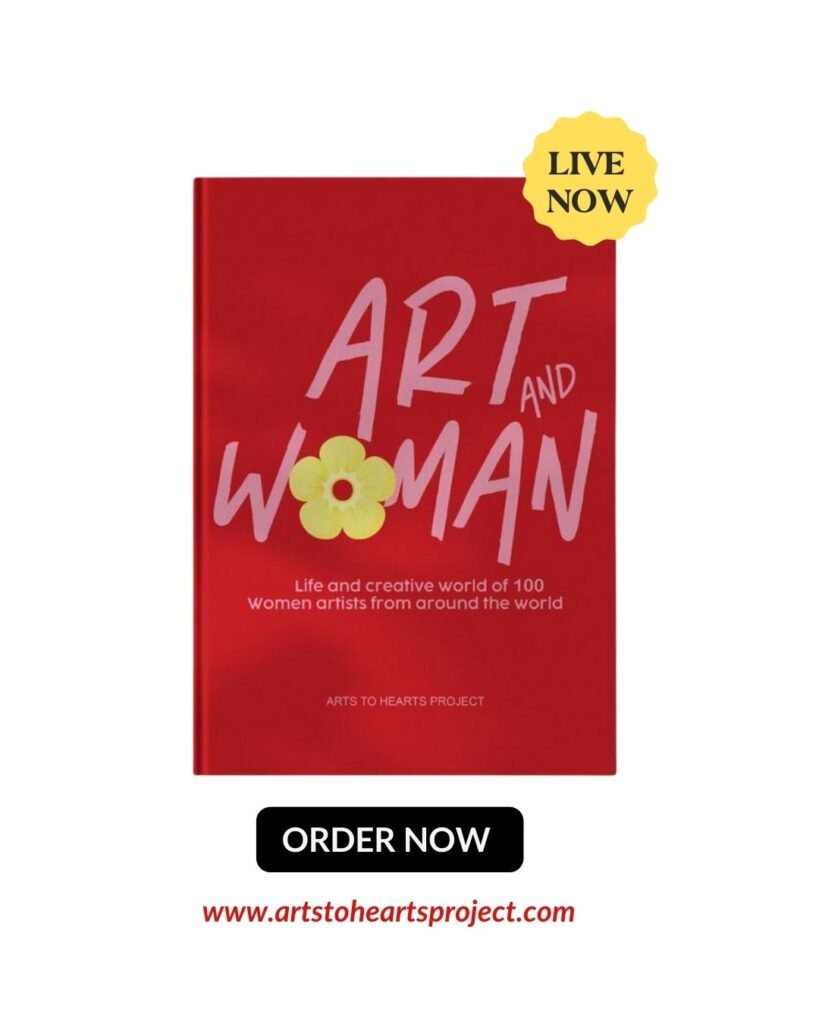How Environmental Fiber Artist Deborah Kruger Uses Art to Save Endangered Birds
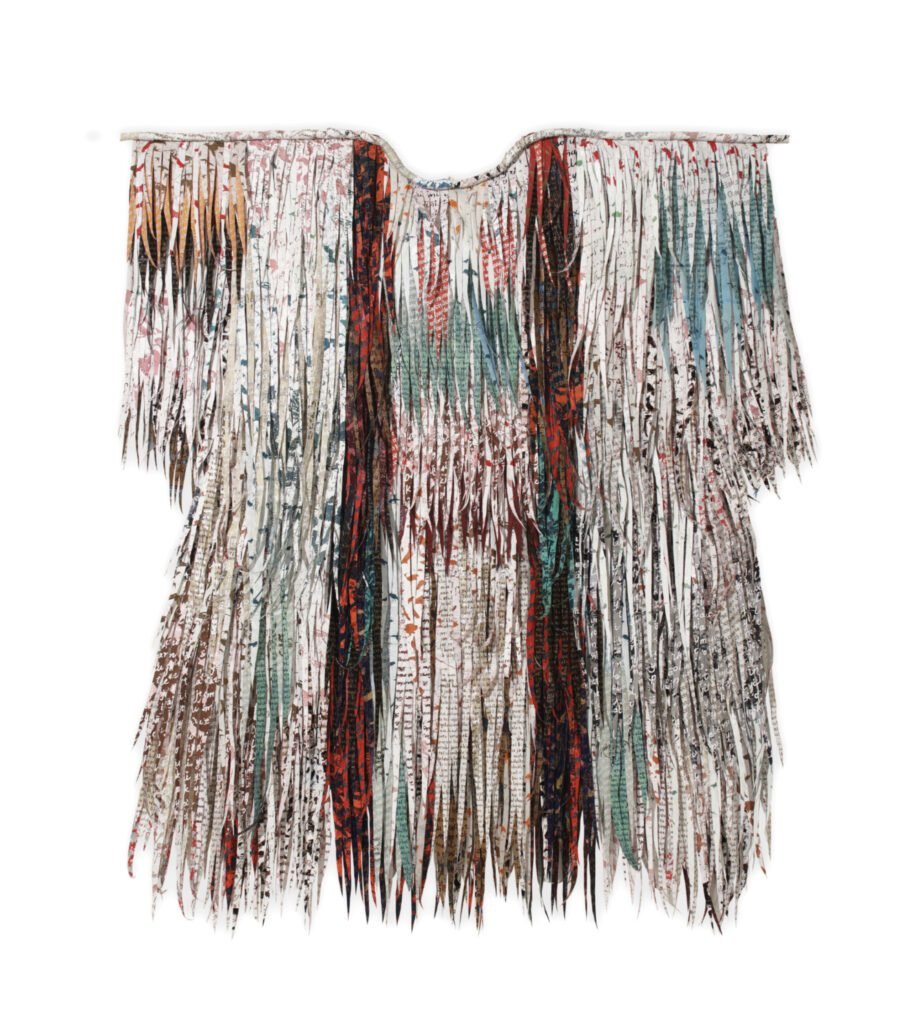
Deborah Kruger is an environmental fiber artist who uses recycled materials to address the impact of climate change. In this interview, She talks about her journey, from sewing her clothes as a child to studying at the Fashion Institute of Technology in New York. Deborah shares how reading Rachel Carson’s book inspired her to focus on environmental issues in her art. She also gives us a peek into her creative process, explaining how she uses recycled materials and highlights endangered birds and languages in her work. Deborah also shares exciting news about her upcoming exhibitions and how her art aims to spark conversations about protecting our planet. She also highlights the important connections between art, culture, and nature, encouraging us all to take action for a better future.
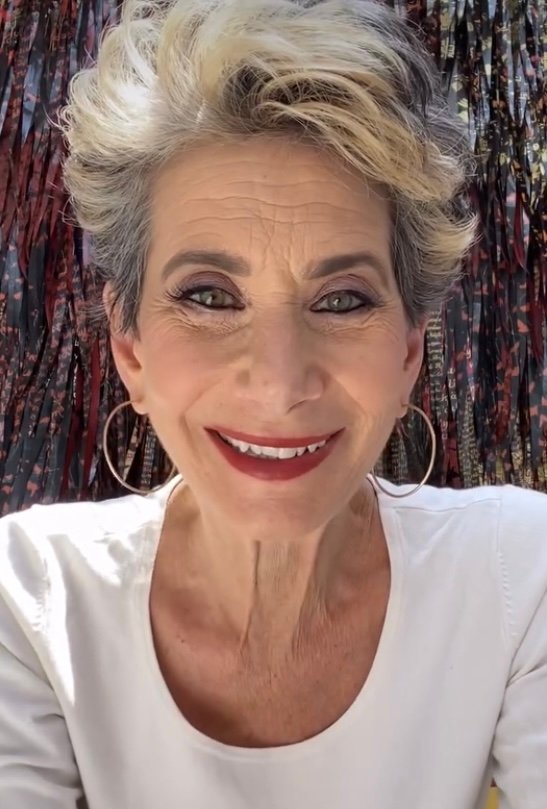
Artist Deborah Kruger has been featured in the Arts to Hearts Project’s book Art and Woman and is recognized by Women in Arts Network as a portfolio partner. Women in Arts Network is a proud portfolio partner of the Arts to Hearts Project’s books and magazines.
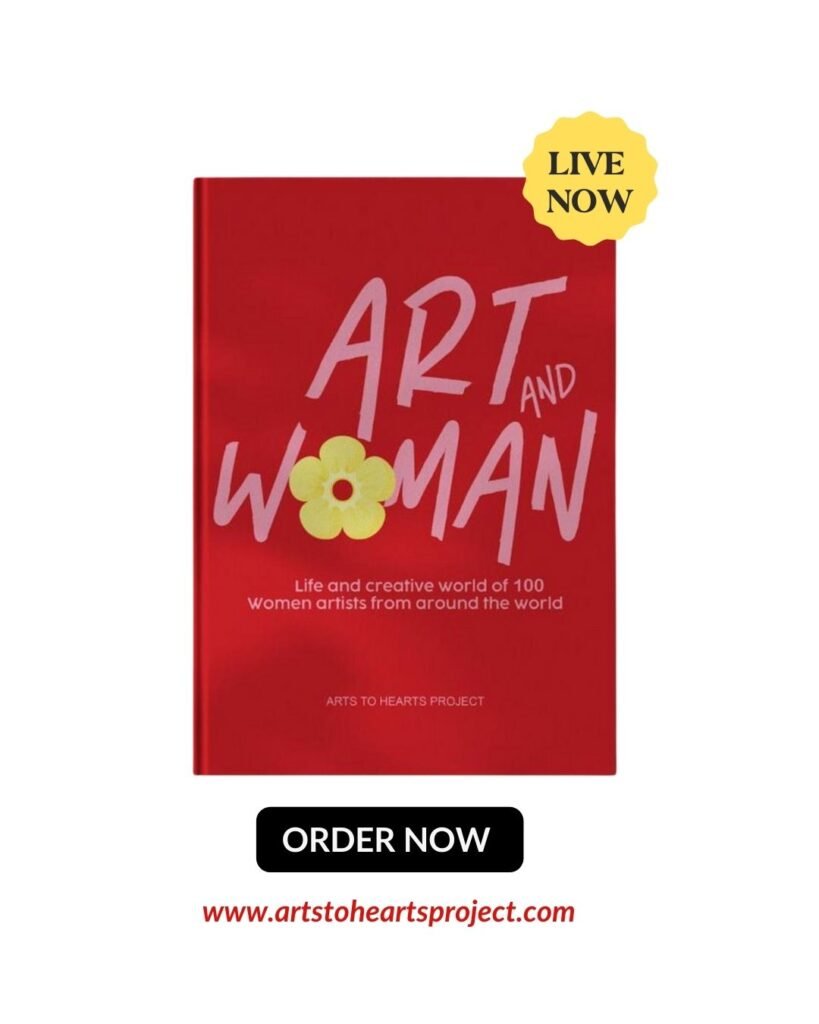
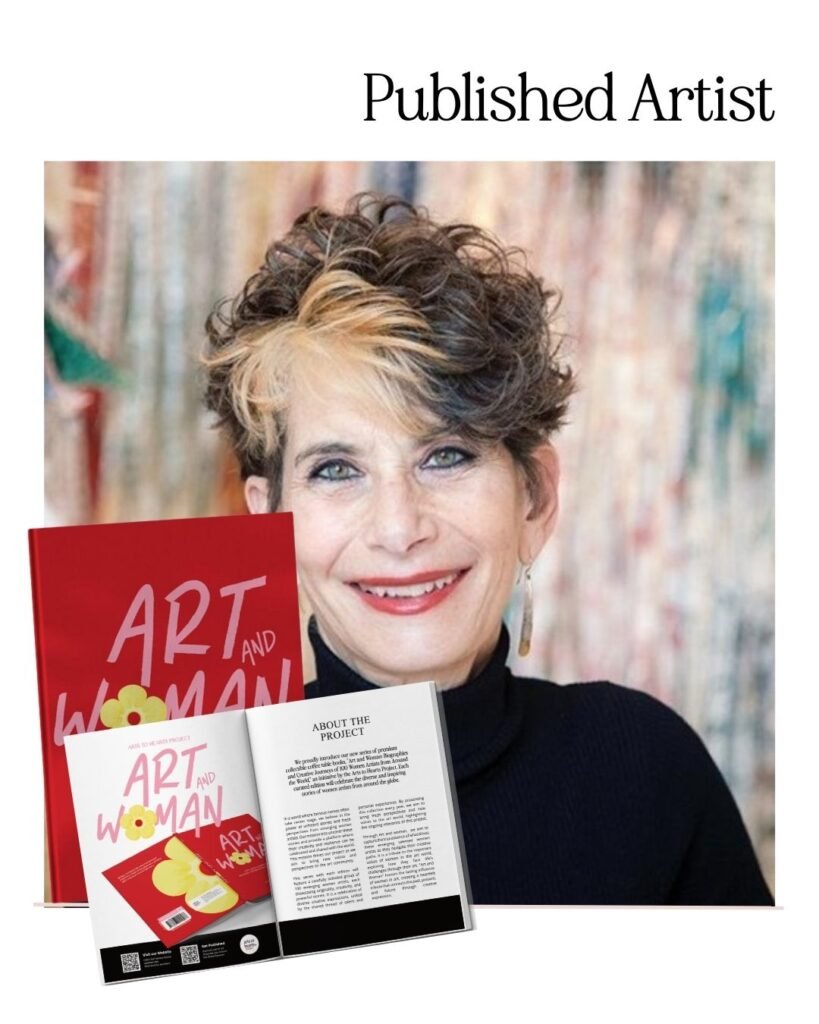
Surface design and patterning have influenced Deborah Kruger’s work since her textile design training at the Fashion Institute of Technology in New York. She has taught, lectured, and exhibited throughout the US, Mexico, Canada, Europe and Australia since the 1980s. Kruger’s art practice balances making objects of beauty that convey layered meaning about habitat fragmentation, bird migration, species extinction, and loss of indigenous languages. Her artwork is made with recycled plastic screen-printed images of endangered birds and languages. North Carolina career highlights: Coined in the South: 2024 Biennial at the Mint Museum in Charlotte (Dec 2024 – April 2025); Solo exhibition at the Block Gallery in Raleigh (Dec 2024 – April 2025); North Carolina Artist Support Grant (2022); North Carolina Artists Exhibition, Contemporary Art Museum, Raleigh (2020).
Current career highlights include winning the Grand Prize of the Keller Prize; selection of artwork for the Art in Embassies program; exhibiting in Venice, Italy in the finalist exhibition for the Arte Laguna Prize and currently in the International Fiber Art Biennial at the Museum of Textiles in Valtopina, Italy. The Museum of Art and Design (MAD) in New York City recently acquired two large environmental pieces; and solo and group exhibitions in Mexico City, Bogota, Toronto, and New York. Kruger has attended residencies at the Millay Colony for the Arts, Austerlitz, NY, (1991); La Porte Peinte Centre, Noyers-sur-Serein, France, (2016); Hypatia-in-the-Woods, Shelton, WA, (2022) and the Icelandic Textile Center in Blondus, Iceland, (2024). Kruger has studios in the lively arts community in Durham, North Carolina and in the lakeside village of Chapala, Mexico where she has a team-based production studio that provides jobs and empowerment to local Mexican women.
1. Can you tell us a little about yourself and your background?
I grew up sewing all my clothes and it seemed logical to go to the Fashion Institute of Technology (FIT) in New York to study textile design. I worked as a wallpaper designer, and this influence is still evident in my artwork. When I was a young woman, I read Rachel Carson’s ‘Silent Spring’ and I credit her as an early influence in what eventually became my path as an environmental artist. My artwork is now a blend of my decorative background and my environmental concerns. At FIT I learned how to use the Metropolitan Museum of Art’s textile repository as a source of inspiration. This training also took root and you can see how I use women’s traditional clothing as a form for many of my pieces, especially the kimonos from Asia and the huipils from Latin America. Kimono 2 and Ropa Blanca (currently on view at the Museo del Ricamo e del Tessile in Valtopina, Italy as part of the II Biennale Internazionale di Fiber Art Contemporanea) are both examples of how I have used these traditional clothing forms as a springboard for my artwork. Like the birds that populate my artwork, traditional handmade clothing is also at risk in our commodity-driven world.
Making art from recycled materials reminds us that we can all do something to reduce our footprint. Incorporating images of endangered birds and languages into my artwork prompts us to remember how our lives are enriched by indigenous culture and how art continues to have the power to inspire new thoughts and action.
Deborah Kruger
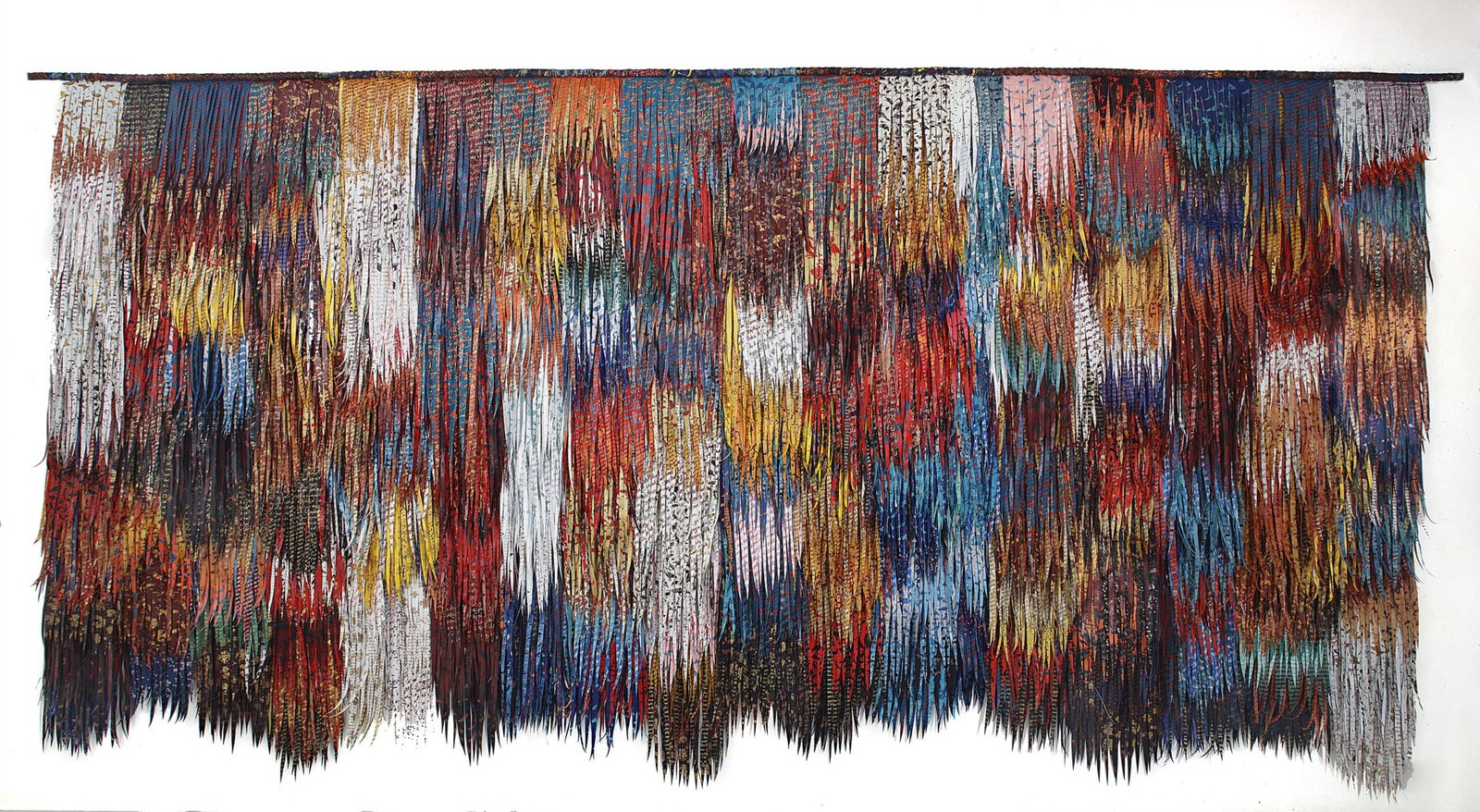
To join the Women in Arts Network, Click below to create your profile.
2. What inspired you to become an artist?
Even as a young child, I knew I was an artist. I was always attracted to color, pattern, and design and these elements are still very important in my artwork. For me, art is a calling, not something that I do when I am inspired. I work in my studio almost every day. The art itself is what inspires me. The more I work, the more ideas I have!
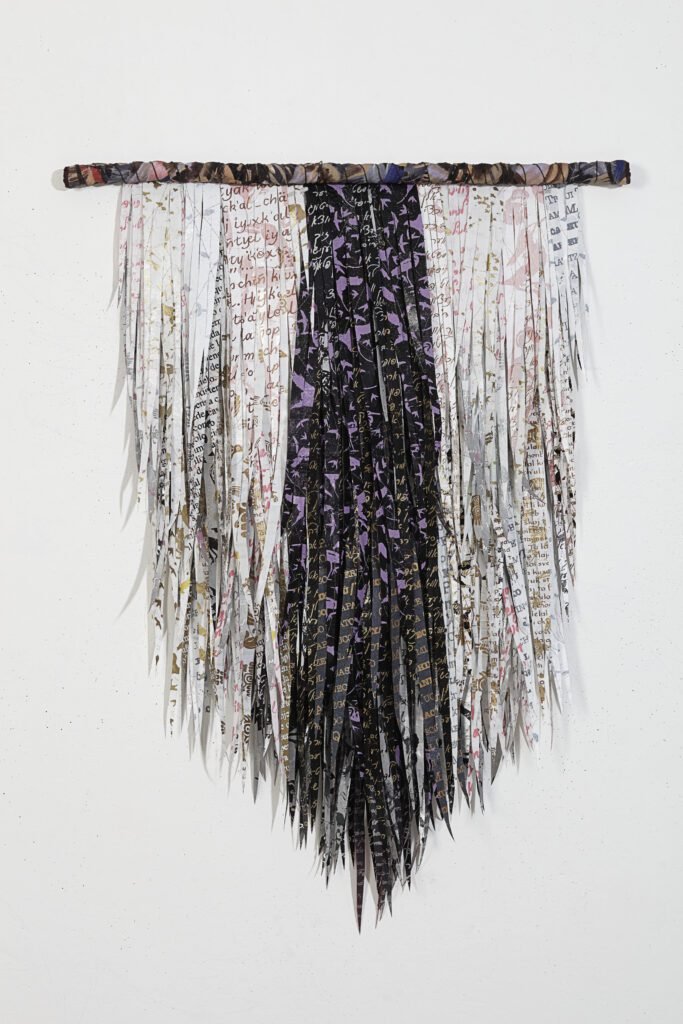
3. Can you tell us about a particular piece of art that holds special meaning for you?
One of my first large-scale pieces was Accidentals. Accidentals is a mural made in four sections (to make shipping easier) whose title is based on a word that describes birds that appear in habitats where they aren’t generally found, often as a result of habitat fragmentation. I make the long tail feathers from recycled plastic, screen printed with images of endangered birds and overprinted with text about bird extinction in endangered languages such as Yiddish, Shorthand, and excerpts of Rachel Carson’s ‘Silent Spring.’ For me, this piece pulls together all of my themes and is also made from handmade processes, like sewing, wrapping, and printing, which are all at risk in this digital age. Accidentals is an homage not only to endangered birds but also to so many aspects of culture that we are also losing. The Museum of Arts and Design (MAD) in New York recently acquired Accidentals and Ropa Pintada, one of the huipil-inspired forms and they will be included in an upcoming exhibition in 2025 of Recent Acquisitions of Monumental Art.
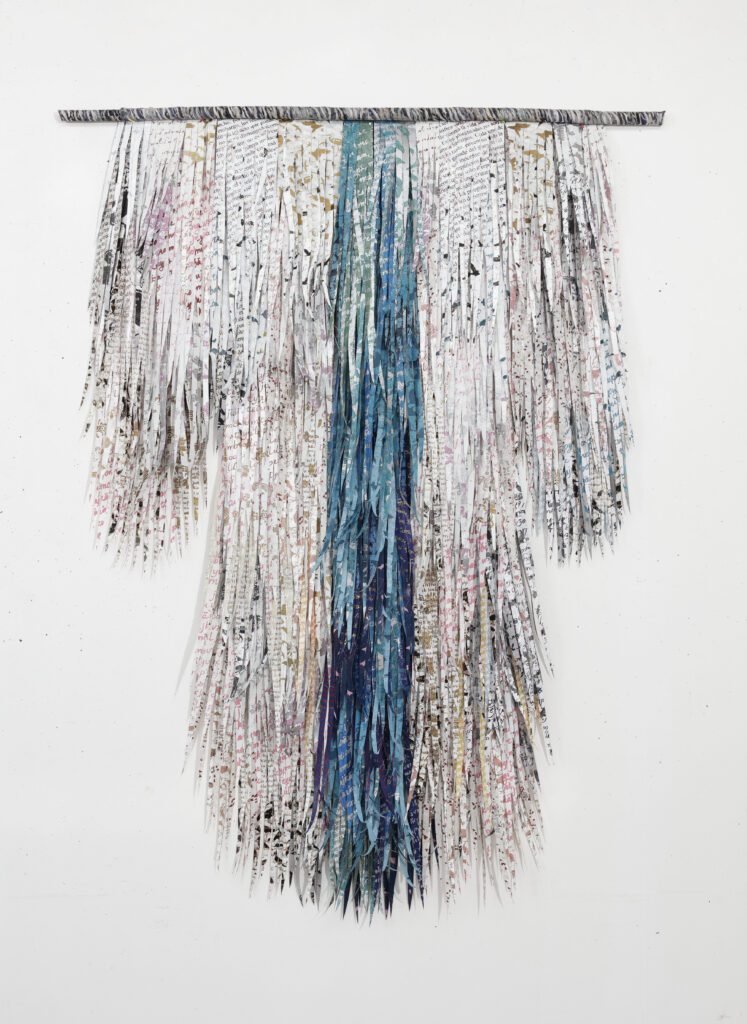
4. What do you hope people take away from experiencing your art?
Like mating plumage, I hope that the colorful and decorative aspects of my artwork draw viewers to my work. In a world that is besieged with bad news and grave environmental concerns, I feel that making beautiful artwork is important because it presents a chance to pause and reflect. Although my artwork is abstract, closer inspection yields images of endangered birds and languages. I hope to touch a chord with my audience, to remind them of how we all need to do something to protect our environment, especially our fragile birds.
All my artwork is made with recycled materials and encourages dialogue about how we can preserve wild spaces, animals, especially vulnerable birds, and protect habitat for all species including humans.
Deborah Kruger

5. Are there any upcoming exhibitions or projects you’re particularly excited about?
I have three upcoming exhibitions that all feel like watershed events in my career. Although I toggle between the US and Mexico, my base in the US is North Carolina. From December 2024 through April 2025, I will have a two-story solo exhibition at the Block Gallery in Raleigh, NC that includes recent and some older work so that viewers can see the progression of my thoughts and artwork. This is the largest solo exhibition that I have had in the US since 2008, so I am extremely excited! Concurrently, I will have one piece, Ropa Arco Iris in the Coined in the South: 2024 Biennial at the Mint Museum in Charlotte, NC. This Biennial is a showcase of the best contemporary artists from the Southern States and it is a great honor to be included. I plan to attend both opening receptions, so if you live in the Triangle or Charlotte and have friends and family there, I hope to see you all there! As I write this, my environmental mural, Redwing, is in transit to Ashgabat, Turkmenistan as part of the Art in Embassies Program of the US State Department. This Program is 60 years old and it offers cultural exchange with almost two hundred US Embassies around the world. That I was tapped to be in this amazing program still feels like a dream come true.
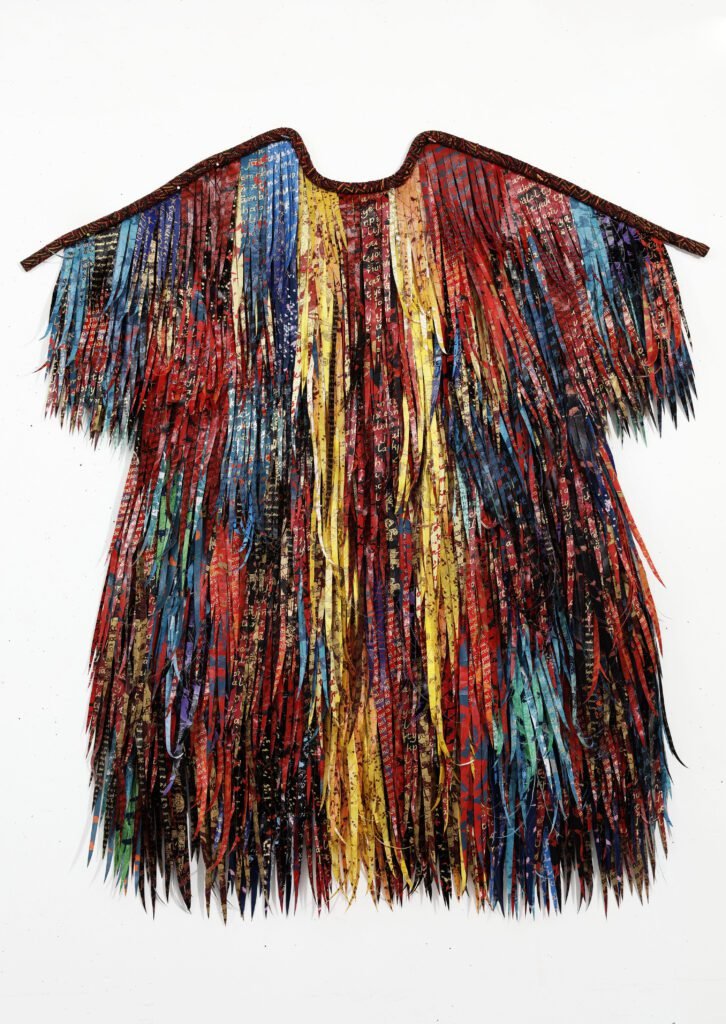
Deborah Kruger’s art is a beautiful reminder of how we can turn tough topics into something meaningful. By using recycled materials and focusing on important issues, she encourages us to think about our connection to nature and take steps to protect it. To learn more about Deborah, visit the links below.
You can explore Deborah Kruger’s journey and the stories of other artists by purchasing our Art And Woman Book here:
